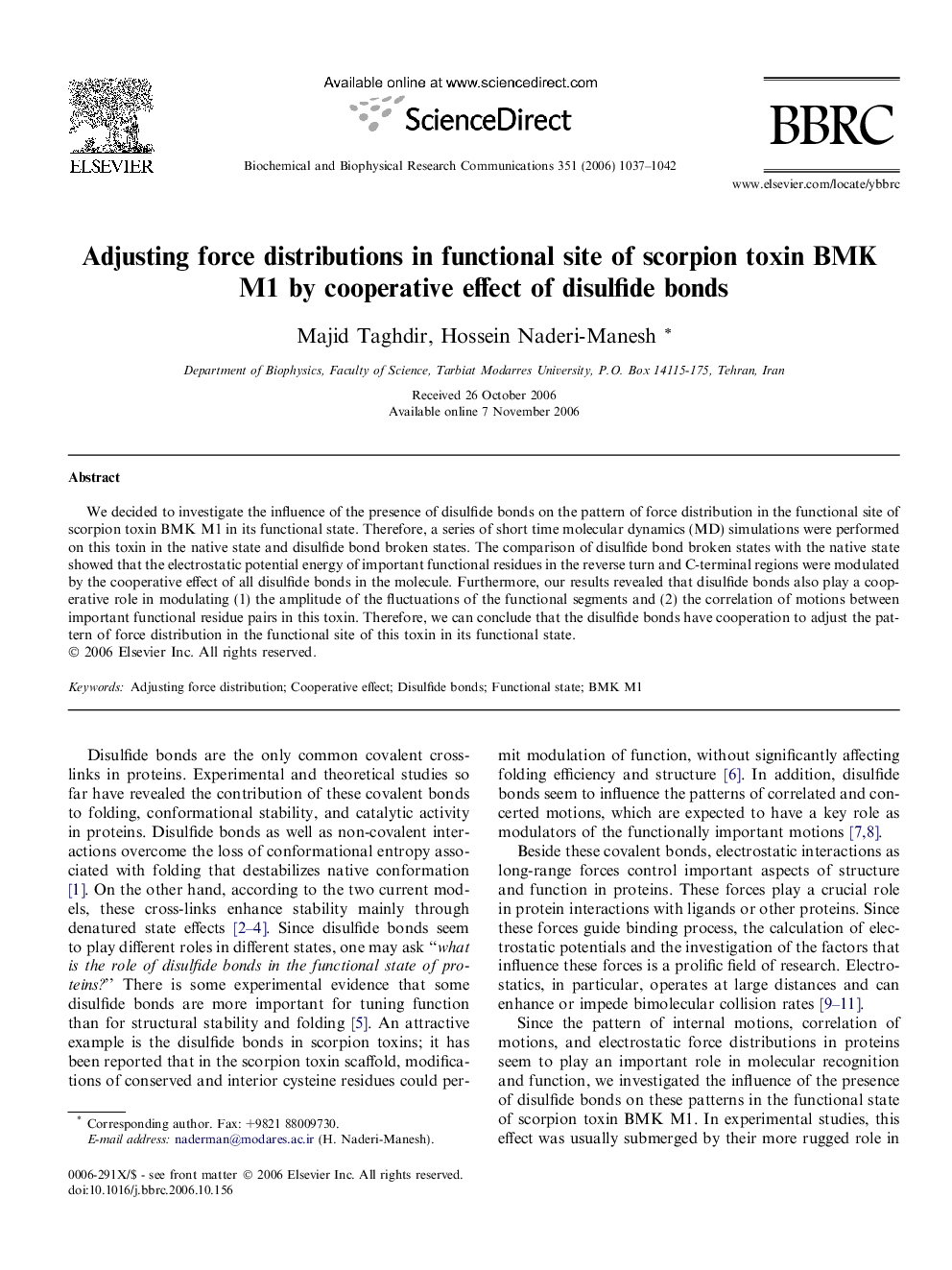| Article ID | Journal | Published Year | Pages | File Type |
|---|---|---|---|---|
| 1938522 | Biochemical and Biophysical Research Communications | 2006 | 6 Pages |
Abstract
We decided to investigate the influence of the presence of disulfide bonds on the pattern of force distribution in the functional site of scorpion toxin BMK M1 in its functional state. Therefore, a series of short time molecular dynamics (MD) simulations were performed on this toxin in the native state and disulfide bond broken states. The comparison of disulfide bond broken states with the native state showed that the electrostatic potential energy of important functional residues in the reverse turn and C-terminal regions were modulated by the cooperative effect of all disulfide bonds in the molecule. Furthermore, our results revealed that disulfide bonds also play a cooperative role in modulating (1) the amplitude of the fluctuations of the functional segments and (2) the correlation of motions between important functional residue pairs in this toxin. Therefore, we can conclude that the disulfide bonds have cooperation to adjust the pattern of force distribution in the functional site of this toxin in its functional state.
Related Topics
Life Sciences
Biochemistry, Genetics and Molecular Biology
Biochemistry
Authors
Majid Taghdir, Hossein Naderi-Manesh,
